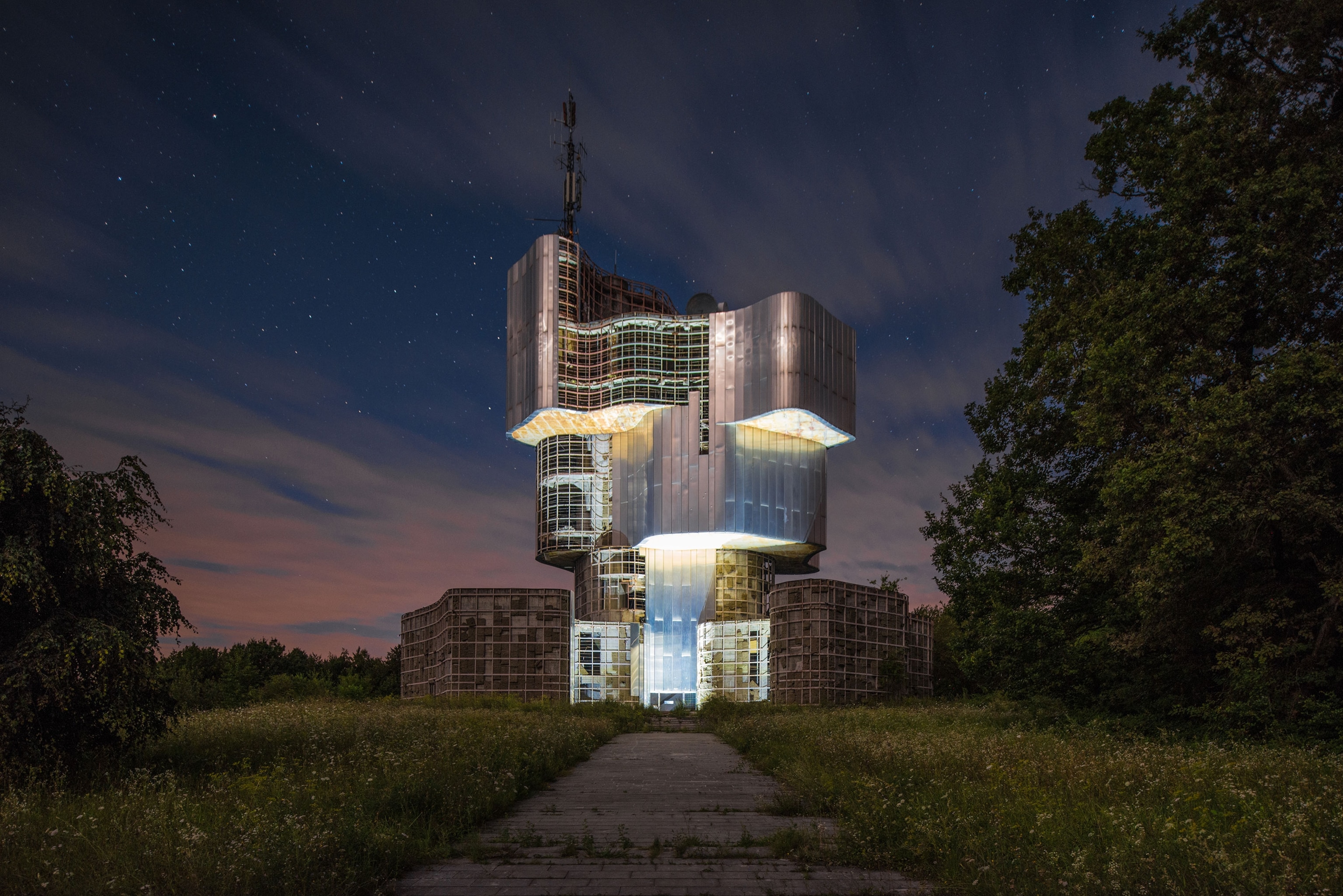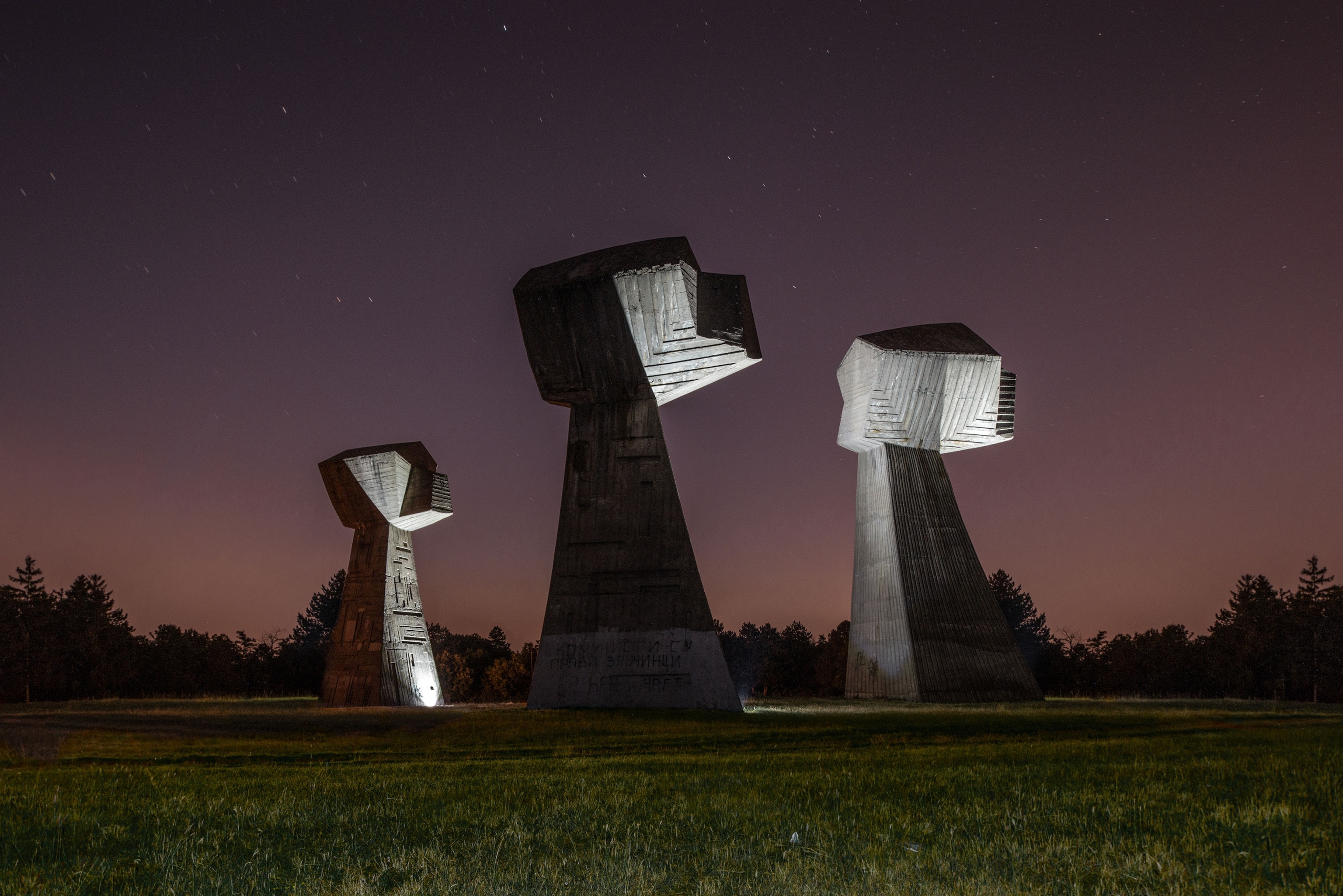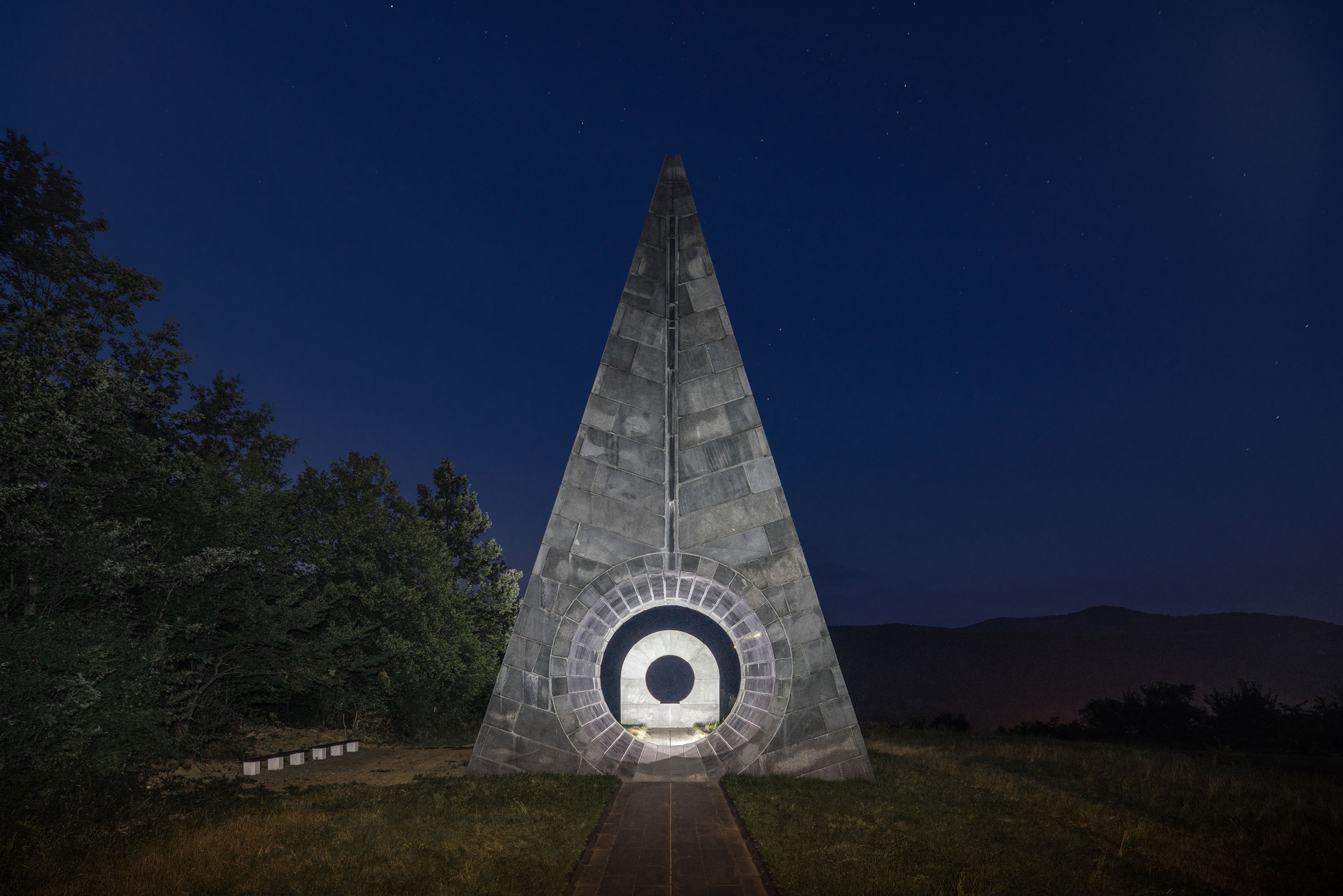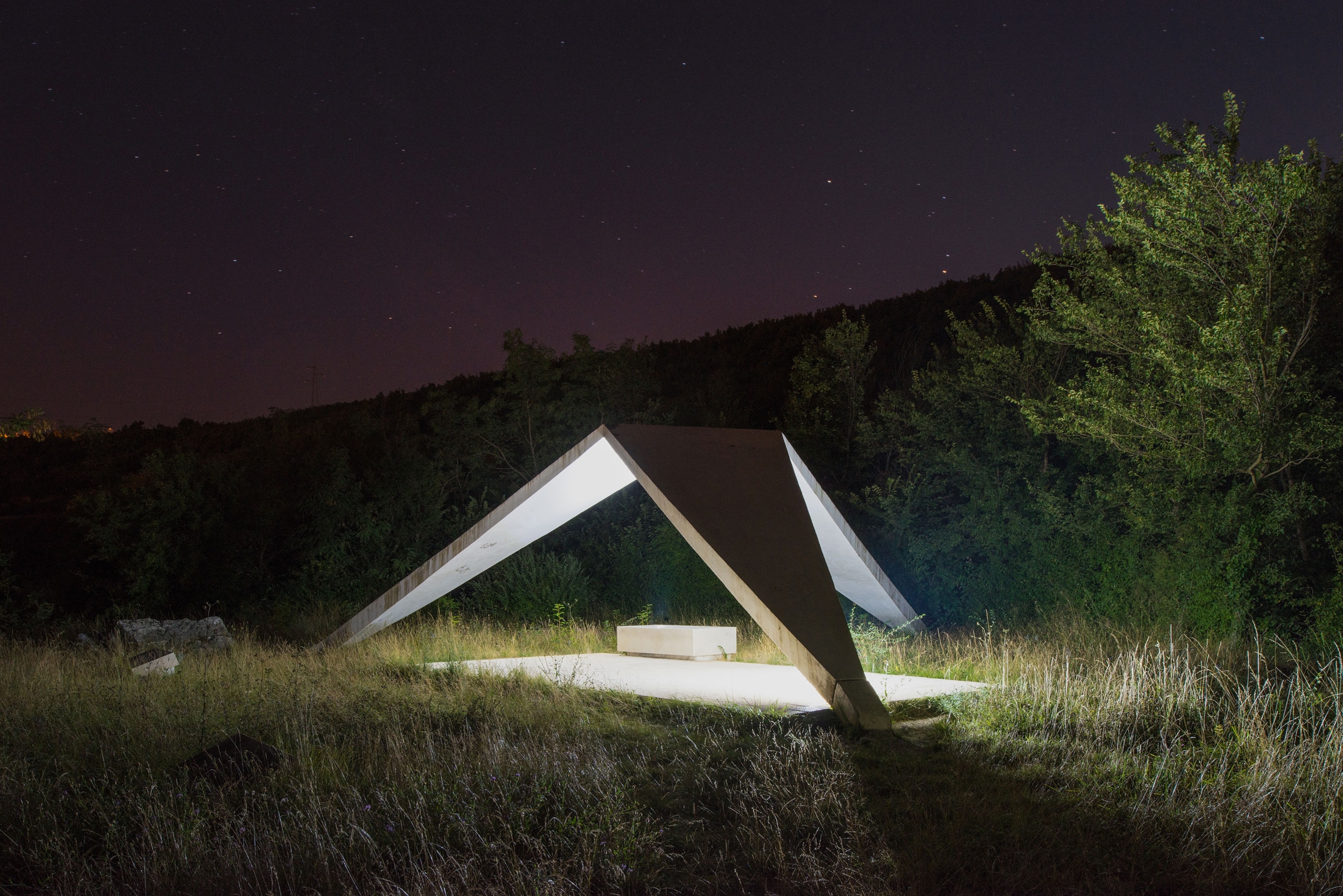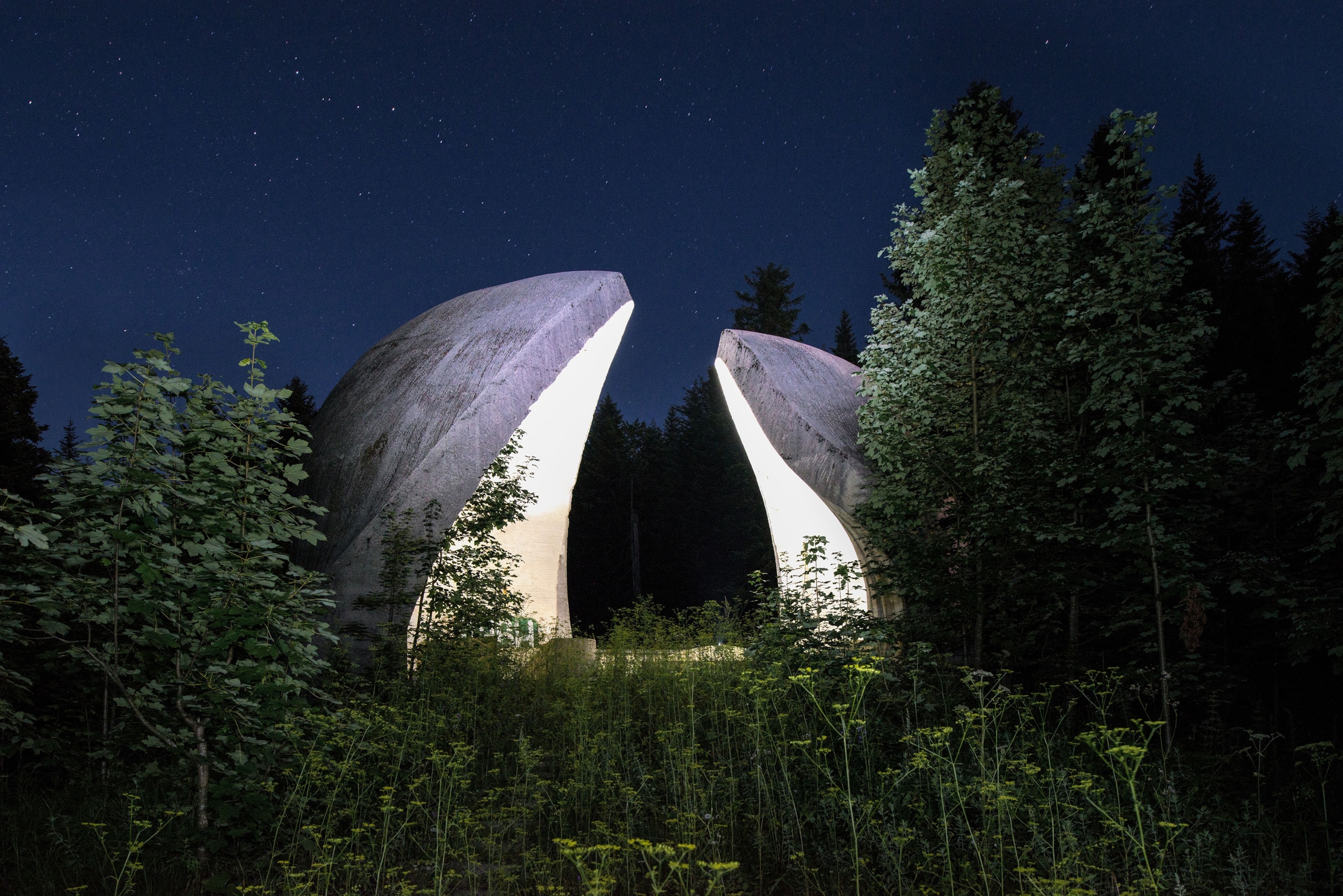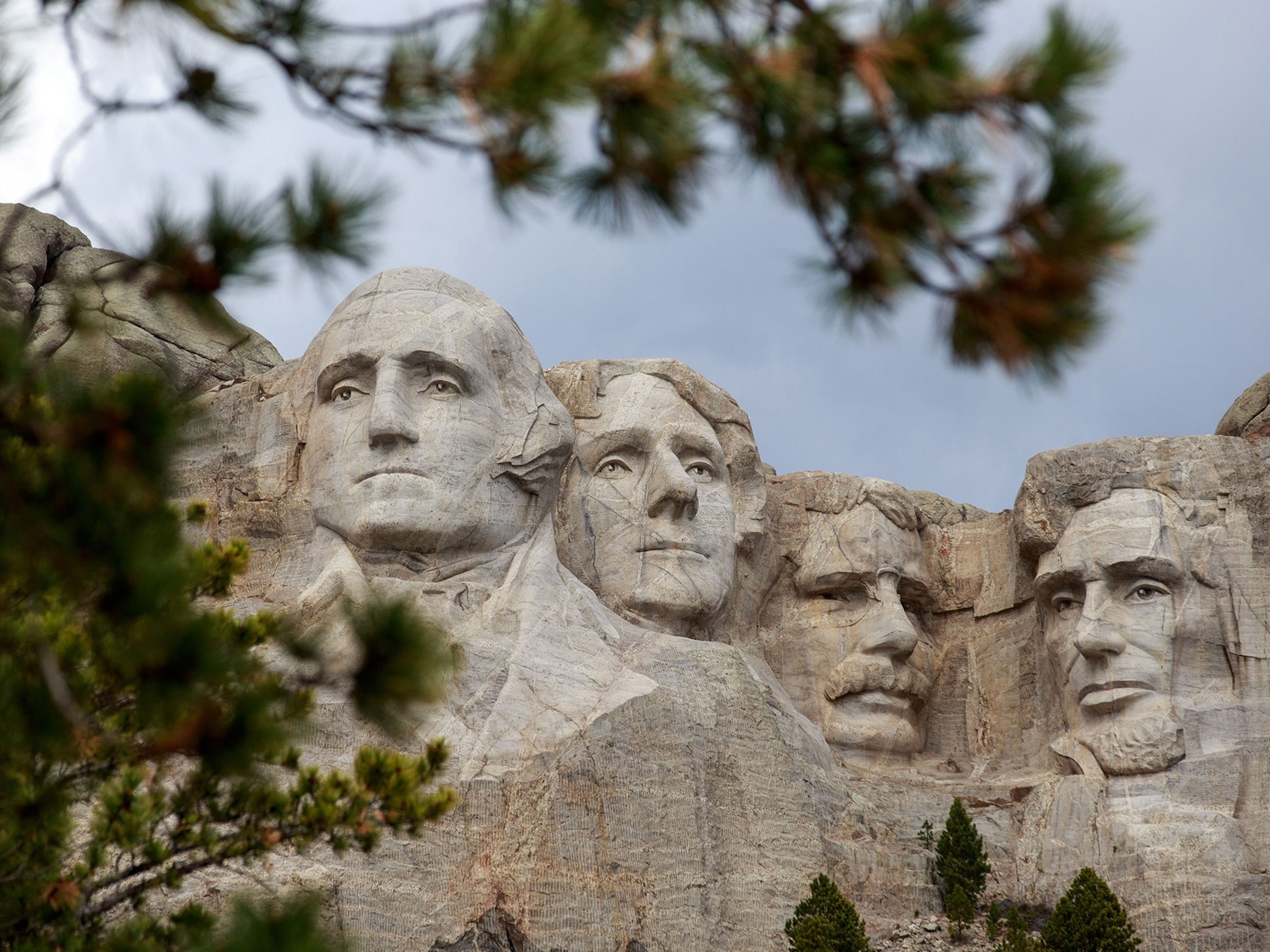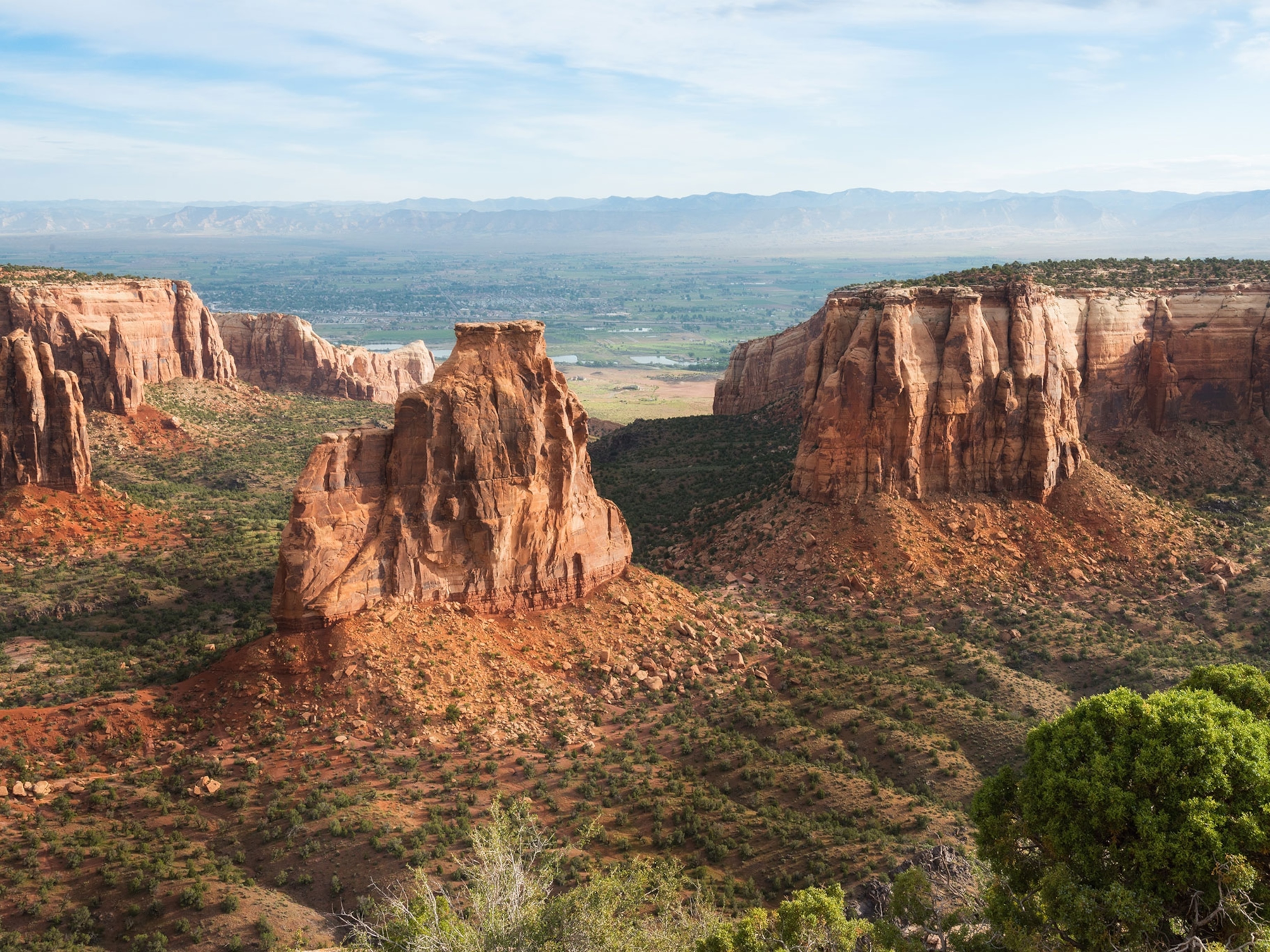Haunting Relics of a Country That No Longer Exists
Discover the incredible history behind Yugoslavia's otherworldly monuments.
Hundreds of bizarre futuristic monuments appear out of place jutting from the varied landscape of the former Yugoslavia—ghostlike echoes of a country that no longer exists. Stretching from present-day Croatia and Slovenia bordering the Adriatic coast, through the jagged peaks of Montenegro and Bosnia and Herzegovina, until sloping down into Serbia and Macedonia, the bold abstract artworks built during the 1960s and 1970s were intended to spread their country's ideals and values to the masses across all the land.
To understand what these relics of the past mean today, photographer Sylvain Heraud traveled to the republics that emerged from the dissolution of Yugoslavia in the 1990s. "The idea of my work is to highlight these monuments and ask the question whether their messages have endured over time," explains Heraud.
The unique style of the Yugoslavian monuments—which looked to Western modernism for inspiration—is objectively much different from the representative art found in its Soviet neighbors. After all, Yugoslavia was an anomaly: a socialist state that allowed free travel to the West and promoted “self-management,” unlike the repressive Soviet Union. Ruling powers around the world build monuments in important public places to promote a particular narrative in an accessible message to the passing crowds. Different symbols in public art reflect the particular style of past or current regimes, and taking notice uncovers layers of history of a place hiding in plain sight.
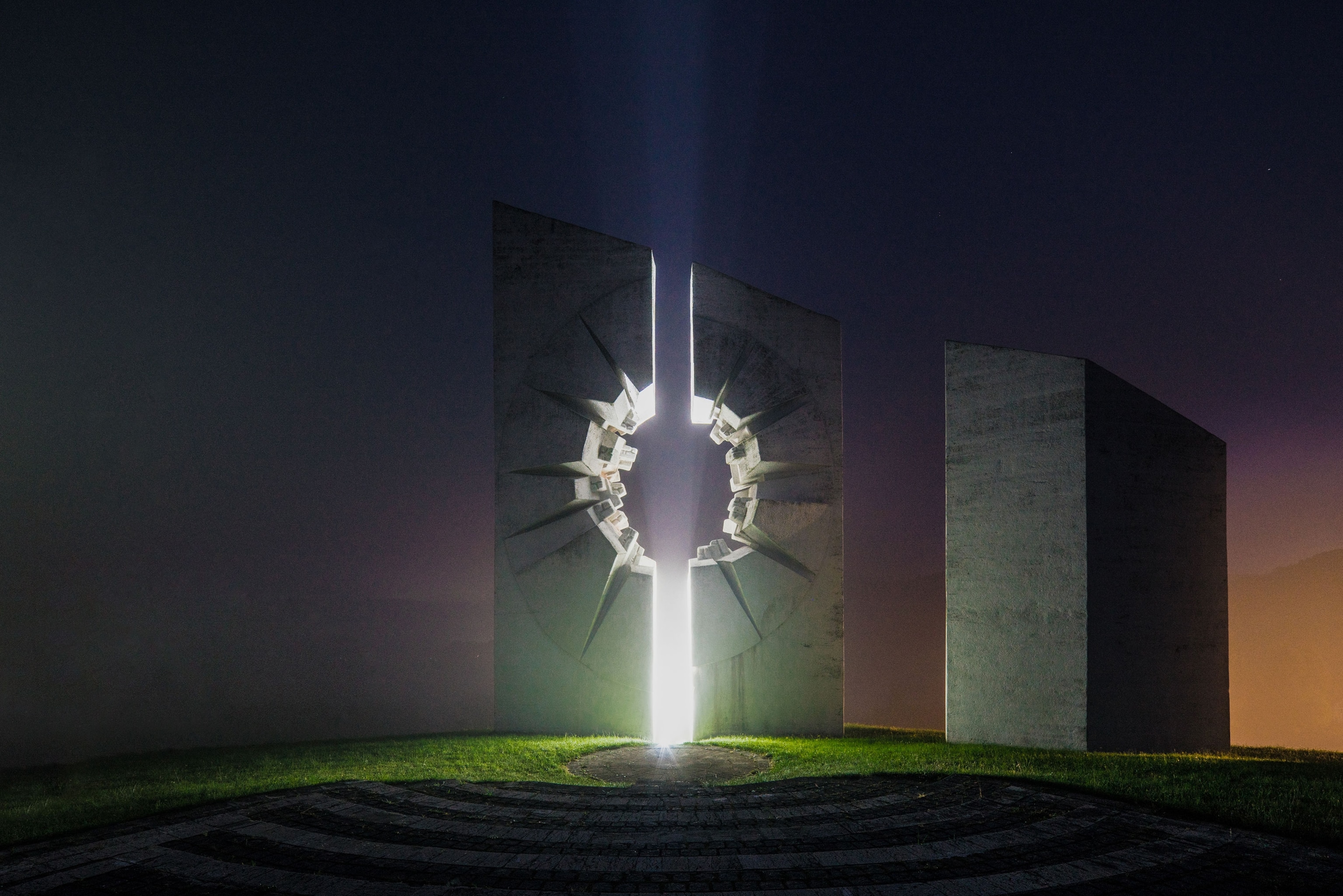
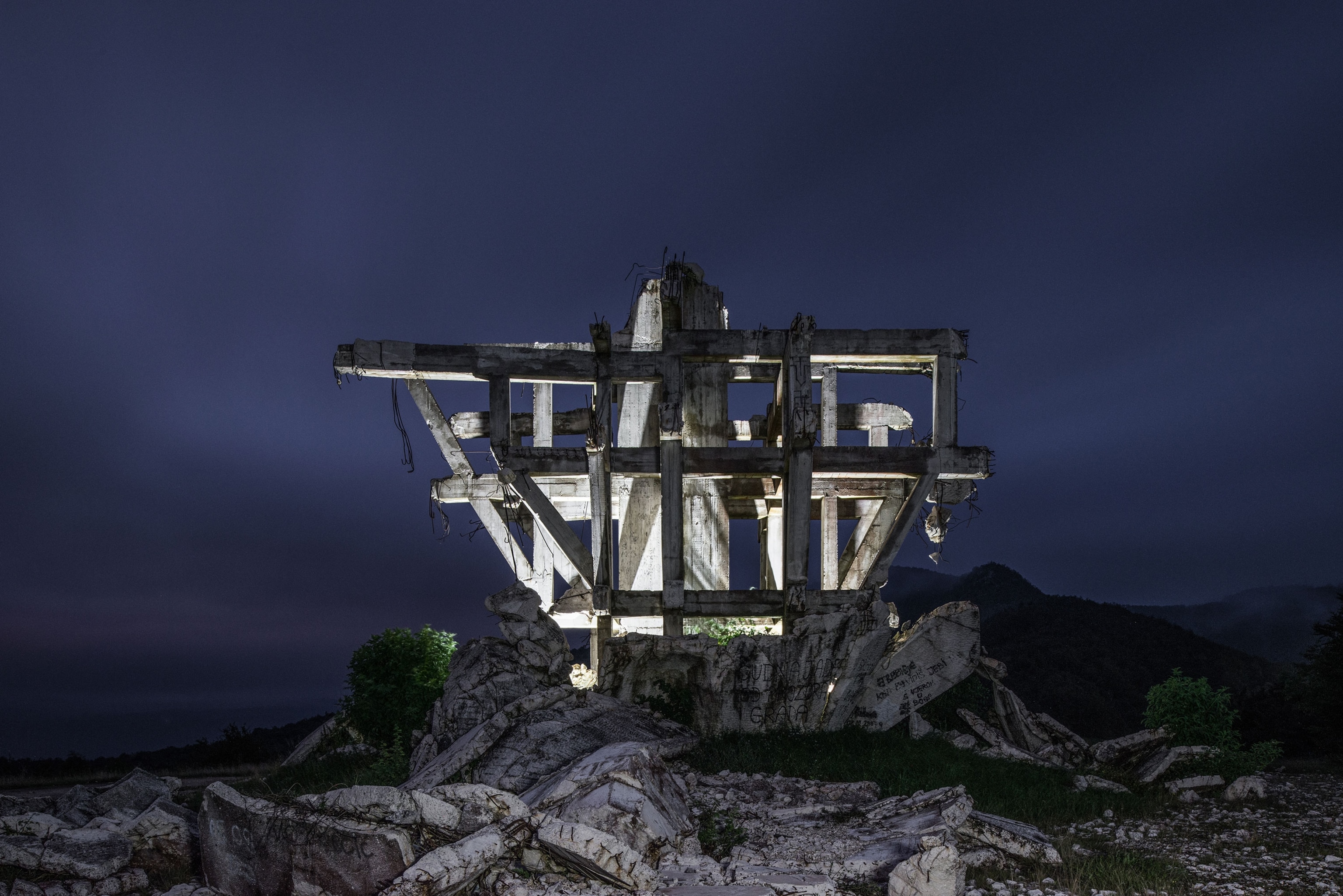
Physically and conceptually heavy, the bold concrete creations convey powerful visual impact near sites of unthinkable tragedies during World War Two. Since then, revolutionary Yugoslav president Josip Broz Tito led the multicultural society until his death in 1980, trying to suppress any lingering animosities from the war. He wanted the monuments to recognize that war laid a foundation for Yugoslavia to exist in its current form, without appearing to favor one group of the heterogeneous society over another. These monuments were intended to present a common thread to tie everyone to the great country of Yugoslavia.
Heraud's photographs emphasize their shared connection by capturing the monuments at night in exactly the same manner. “I wanted to lose the notions of scale and size, to concentrate myself on the monuments themselves, as symbols. I brought lamps [to light up each place,] the white light allows me to remain neutral. We can however guess the green environment (trees) that gives a conductive thread on all images.”

Far from a simplified representation, Heraud’s series shines light on each monument’s uniqueness. As much as Tito tried, the region’s strategic position historically at the crossroads of great powers makes it difficult for only one narrative to suffice. When he died in 1980, political upheavals and unresolved issues among the various people caused the country’s ultimate destruction through bitter ethnic wars.
- National Geographic Expeditions
These conceptual monuments, originally meant to usher in a utopian future, live on. Some people nostalgically consider these souvenirs of a better time, while others find them painful reminders of an unspeakable past. That’s why the monuments today live in various states of disrepair. Some of the memorials have caretakers and house small museums, while others lay in ruin.
These incredible memorials offer any visitor a glimpse into the former Yugoslavia’s remarkable history. It may take effort to get to know the complicated region, let alone find the monuments, but the effort is definitely worth it. These monuments form the very essence of Yugoslavia.

